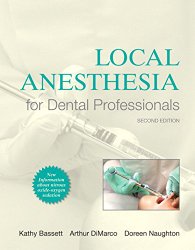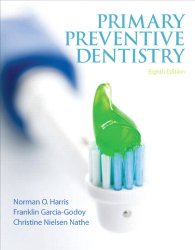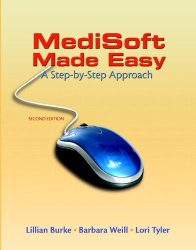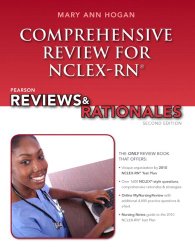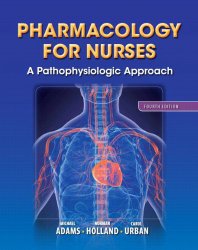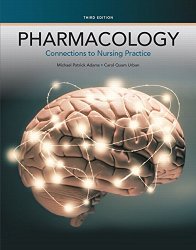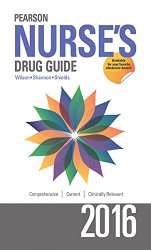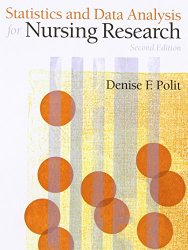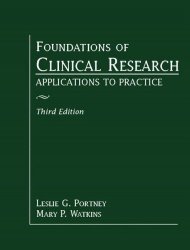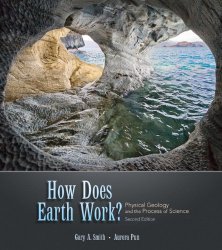For courses in Pain Control, Local Anesthesia in Dentistry, and Nitrous Oxide Sedation (minimal sedation) in Dentistry. Local Anesthesia for Dental Professionals, 2/e provides a user-friendly, primary resource for instructors and students of pain control. This text is appropriate for both dental and dental hygiene students and provides …
Prentice Hall
Primary Preventive Dentistry (8th Edition) (Primary Preventive Dentistry ( Harris))
Organized for consistency, coherence, and readability, this fully updated text covers all areas of prevention in dental care. PRIMARY PREVENTIVE DENTISTRY, 8/e first describes dental diseases and conditions, helping students clearly understand the processes that can be prevented through the use of preventive modalities or ideas. Next, it presents detailed strategies to prevent these diseases …
Extremely user-friendly and updated in an all new edition, this resource introduces readers to medical informatics from the perspective of the novice user. Clear explanations of essential concepts are followed by practical applications. The authors’ step-by-step approach and thoughtful use of screen captures make this flexible for both the traditional classroom setting and self-paced instruction. This is a must-have …
Pearson Reviews & Rationales: Comprehensive Review for NCLEX-RN (2nd Edition)
The BEST-SELLING Pearson Reviews & Rationales: Comprehensive Review for NCLEX-RN® is back and in a brand NEW edition! Completely current reflecting the April 2010 NCLEX-RN(R) test plan, this review book features a comprehensive outline review, over 1800 practice questions and multiple practice tests. The second edition boasts over 200 new questions and includes ALL of the alternate question formats on …
Pharmacology for Nurses: A Pathophysiologic Approach (4th Edition) (Adams, Pharmacology for Nurses)
This up-to-date text helps nursing students master pharmacology by tightly linking it to therapeutic goals and patient wellness. Organized by body systems (units) and diseases (chapters), PHARMACOLOGY FOR NURSES: A PATHOPHYSIOLOGIC APPROACH, 4/e provides complete information on the drug classifications used to treat each disease class. Students can easily locate all relevant anatomy, physiology, …
NOTE: You are purchasing a standalone product; MyNursingLab does not come packaged with this content. If you would like to purchase both the physical text and MyNursingLab search for 0134162978 / 9780134162973 Pharmacology: Connections to Nursing Practice Plus MyNursingLab with Pearson eText — Access Card Package Package consists of: …
Pearson Nurse’s Drug Guide 2016 is ideal for courses in nursing curricula covering drugs and/or drug administration. It also serves as a useful reference for nursing professionals. The information nurses need for safe, effective drug administration in any setting With over 400 updates, the new 2016 edition …
Statistics and Data Analysis for Nursing Research (2nd Edition)
The second edition of Statistics and Data Analysis for Nursing , uses a conversational style to teach students how to use statistical methods and procedures to analyze research findings. Readers are guided through the complete analysis process from performing a statistical analysis to the rationale behind doing so. Special focus is given to quantitative methods. Other features include …
Foundations of Clinical Research: Applications to Practice (3rd Edition)
Foundations of Clinical Research: Applications to Practice, 3/e provides the foundations that are necessary for finding and interpreting research evidence across all healthcare professions. This book has been revised to reflect the most current changes in the field of clinical research in rehabilitation and medicine, including the growing emphasis on evidence-based practice (EBP) that has become central to all of health care and the …
How Does Earth Work? Physical Geology and the Process of Science (2nd Edition)
With its unconventional yet highly effective approach, How Does Earth Work? demonstrates the process of science as a vehicle for investigating physical geology. Smith and Pun connect readers to the evidence behind the facts, instead of reproducing known facts—sparking interest in how science is practiced and how we know what we know. Like geology detectives, readers …
